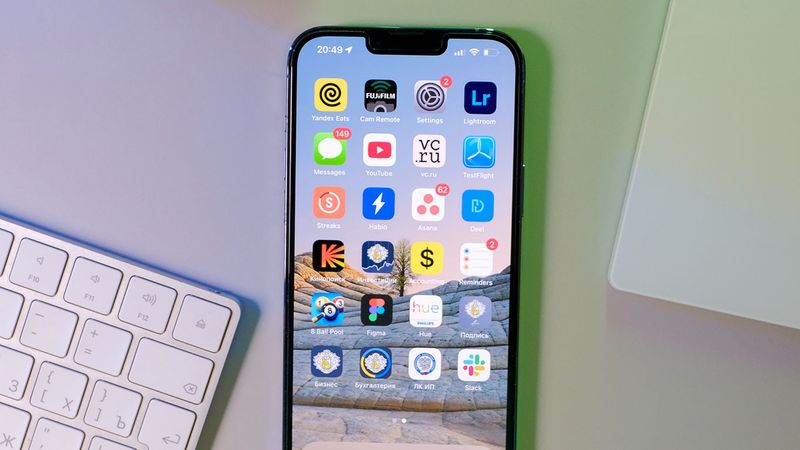Ask users and administrators alike what part of maintaining devices proves to be the most challenging and you’ll likely encounter different answers depending on their perspective. While the top choice may differ from one organization to the other based on needs, there’s certainly no doubt that among the top challenges lies managing the application lifecycle effectively.
In this blog, we discuss the ways in which Apple administrators can leverage Apple Business Manager and Jamf solutions to manage the entire application lifecycle effectively and holistically by integrating both solutions for efficiency and seamless support.
What is the application lifecycle and how does it work?
Though it’s often mostly associated with software development, the application lifecycle is a five-step model that aids administrators tasked with comprehensively managing apps that get deployed to end users and devices.
The entire process is iterative and cyclical. Meaning that each phase is documented and used to inform the phase that follows it in the model through lessons learned. Upon reaching the final step, it continues in a loop back to the first step, continuing through all the phases once again.
Not focusing specifically on a specific management task, like procurement or deployment, the entire lifecycle focuses on holistically managing all aspects related to applications. The entire process is broken down into five categories:
- Plan: Determine the solution that the app(s) will provide to a problem and determine requirements and dependencies, if any.
- Develop: Begin work on programming your app or, in the case of this blog, take the appropriate steps to procure the necessary app licenses.
- Test: Straight-forward testing of the solution to verify that it meets organizational needs and does not introduce new forms of risk.
- Deploy: Mass deployment of the app(s) to end-users and devices.
- Maintain: Perform tasks to ensure apps are patched and kept up-to-date.
Before we dive into it further, let’s first recap what Apple Business Manager is and why it’s a critical component of application lifecycle management.
What is Apple Business Manager?
Apple Business Manager combines the power of Apple’s Automated Device Enrollment, formerly Apple Device Enrollment Program (Apple DEP), and Volume Purchasing, formerly Apple Volume Purchase Program (Apple VPP), in one consolidated service to allow you to automatically deploy Mac, iPad, iPhone and Apple TV devices directly to users — configured with settings, security controls, apps and books.
Why did ABM replace VPP?
Apple’s Volume Purchase Program, or VPP for short, was the name given to the centralized console which organizations use to purchase and distribute apps to the Apple devices in their fleet. This includes macOS, iOS, iPadOS and tvOS-based devices.
VPP, alongside Device Enrollment Program (DEP), served as two separate programs that allowed MacAdmins to manage apps and device enrollments respectively. While both programs still exist, they have found a new home in Apple Business Manager.
In consolidating these programs into one console, ABM provides a central platform for administrators to manage device enrollments across multiple locations, including apps and provides a system for integration with cloud-based solutions, like MDM and identity providers (IdP). This extends the service to provide centralized management and assignment of user accounts, solutions integration, app, book, and media procurements, and manage Apple services that require federation, like managed iCloud accounts.
How are app licenses assigned?
ABM is integrated directly with the App Stores for macOS, iOS/iPadOS and tvOS. This means that MacAdmins can procure apps by license count versus a single instance of an app like consumers do when navigating the App Store from their devices.
The benefit of this model is that organizations can effectively request any number of licenses for a given app in one fell swoop. Regardless of whether the app is a free or paid app, the organization can implement a payment system (like credit or PO) to cover the costs of paid apps and manage the total number of licenses from the console.
For example, if downloading the Jamf Reset app that is used in organizations to quickly refresh devices assigned to multiple users, admins can simply search for the app by name and then select the number of licenses they need, then complete the “purchase”. Even though this app is free, ABM will communicate with the App Store to grant the organization the number of licenses requested, usually within seconds.
Once the “purchase” is completed, the total number of licenses will appear under the Apps section and be made available to be assigned to devices and/or users.
Device-based license assignment
Licenses can be assigned one of two ways. The first of which – and the most common assignment type – is based on the device.
Consider this the method to use for the general deployment of apps commonly used by all users of a particular device. A good example of this would be Google Chrome, with most users of a device utilizing the third-party browser for web surfing duties.
User-based license assignment
The second assignment type is based on the user and not the device itself.
Using this method, users can rest assured that regardless of the device they are assigned, the apps they need to remain productive are always available. This is especially true in environments with shared devices, like hospitals. Also, it is helpful in instances relating to paid apps, where perhaps one user requires this app but others do not. This way, the app seemingly “follows” the user wherever they may go, irrespective of the device they’re using at any given moment.
It should be noted that app assignment types may be used interchangeably without issue. Often, a best practice is to assign any apps used by all users to the devices themselves, while apps that are used by only certain users, in special circumstances or when app licenses are limited to only those users that will be using it.
Learn more about Apple Business Manager
- Do you really need Apple Business Manager?
- Apple Business Manager and device management explained
- What is Apple Business Manager?
- Benefits of Apple Business Manager and MDM integration
- Using Apple Configurator 2 with Apple Business Manager
- Verify Apple ID domains with ABM
- Are Managed Apple IDs the right choice for your business?
by Category:
Have market trends, Apple updates and Jamf news delivered directly to your inbox.
To learn more about how we collect, use, disclose, transfer, and store your information, please visit our Privacy Policy.


